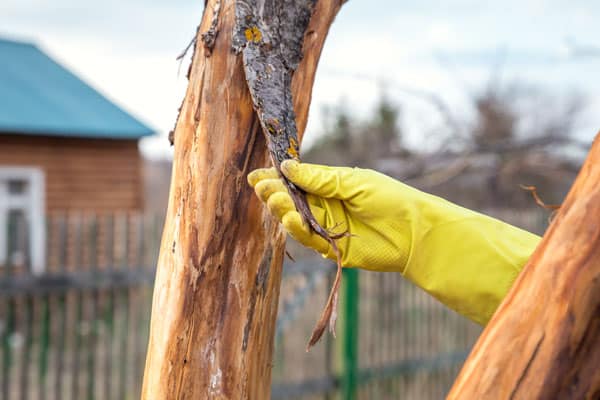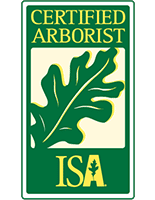Do you know the signs of a dying tree? If trees surround your home, you should be aware of your trees’ health- for safety reasons if nothing else.
OSHA says that trees are more dangerous than sharks, in terms of the damage they do. Each year, more people die from falling trees than from shark attacks. And tree damage is a frequent cause of homeowners having to redo their roofing.
Knowing how to spot a dead or sick tree can help you avoid a tree catastrophe on your property. Here’s a quick summary of what you need to look for.
How to Know if a Tree Is Dying
You can tell if a tree is sick or dying by looking for the signs. They are fairly obvious, once you know how to spot them.
1. You See Sticks Everywhere on the Ground
When a tree sheds sticks all the time, it’s a sure sign that it’s not healthy. A tree that’s in good shape will have flexible branches and twigs, which don’t tend to break off. If you see broken branches or twigs on the ground around a tree, you should call a tree specialist to do an inspection.
2. The Bark Is Falling Off
If your tree’s bark is flaking and peeling, it’s not receiving enough nutrients. Like the human body, a tree has skin, which is the bark. Human skin problems provide clues about underlying illnesses, just like the condition of tree bark can point to tree disease.
You may be able to save the tree by watering the bare spot and taping the tree bark back on until it re-attaches. If the bark loss results from an infectious condition, however, you will need to cut down the tree before the infection spreads to other trees in the area.
3. You Can See Rot or Fungus
Signs of rot or tree fungus are always bad news. If you see either, you need to act immediately to save the tree. Unfortunately, if the damage is extensive, saving the tree will be impossible.
There are some treatments for rot and fungus, but they may not be worth trying if the tree is already too far gone. If there is any danger of the fungus spreading, the tree will have to come down.
4. The Tree Is Leaning
Unless it grew at an angle, a leaning tree should not exist. If a tree suddenly starts to keel over, the roots may be dying or damaged. You may be able to brace the tree to keep it from toppling all the way, but don’t expect that to save the tree. In most cases by the time a tree leans over, it’s already fatally injured.
5. Open Wounds
Open wounds can lead to tree death. Unlike the careful cuts from tree trimming, torn branches, large cuts, or splits in the tree are difficult for a tree to recover from. Lightning strikes and wind can split trees from top to bottom and tear off branches. When large branches fall off, the tree has a high chance of dying.
6. No Leaves
Lack of foliage is a dead give away that a tree is dying or dead. If you see bare branches on one side of a tree, it could indicate root damage. It may also mean that disease or pests have invaded.
Dead leaves are a sure sign that something is obstructing the flow of nutrients on the inside of the tree. In many cases, the damage is permanent and irreversible.
7. Termites Or Other Pests
Trees fall prey to many types of pests. Beetles, ants, and termites are just a few of the types that can take a healthy tree down. If you catch them early, you may be able to stop them before they succeed.
But if the tree’s stability has been compromised by too much damage, it will probably be better to take it down. This way it won’t fall and crush something else on your property.
8. Root Damage
If a tree experiences root trauma, it can die. Sometimes construction or landscaping projects injure tree roots. Roots and branches can get in the way of buildings, sidewalks, and driveways, which leads to their removal.
However, if they are cut back too severely, the tree will have trouble feeding itself. If you’ve had construction or landscaping near your property and notice a tree showing signs of root damage, call an arborist right away.
9. Brittle Branches
If your tree’s branches break easily and you notice dead branches littering the ground after windy weather, you should have your tree’s safety evaluated ASAP.
Brittle branches are usually diseased or dead, which could mean the majority of the tree itself is also dead. Don’t wait until the tree falls on your house to check its stability!
10. No Green Under the Bark
If you scratch a tree and don’t see green under the bark, beware. Dead trees have no nutrient flow, which the green layer indicates. A lack of green under the bark is usually accompanied by dead twigs and brittle branches, so if you see one sign, look for the others.
What To Do If You See Signs of a Dead or Dying Tree
If you suspect that you have a dead tree on your property, don’t leave it there until it splits in half and falls over. If it falls, it could damage your property or a neighbor’s.
You should call a tree removal company as soon as you can. Most tree services will be able to explain the signs of a dying tree. They will let you know if you can salvage the tree or if it needs to come down.
Hire a Professional to Handle Your Dead or Dying Tree
Most importantly, if you see signs of a dying tree, don’t panic. You will need to take action, but there’s no need to get upset. A good arborist or tree care company will be able to give you the advice you need to make a good decision.
With over twenty years of experience, we can help you evaluate the trees on your property. We will either treat them or remove them, depending on whether we can salvage them or not. If you have questions about your trees, contact us today for a free quote.



